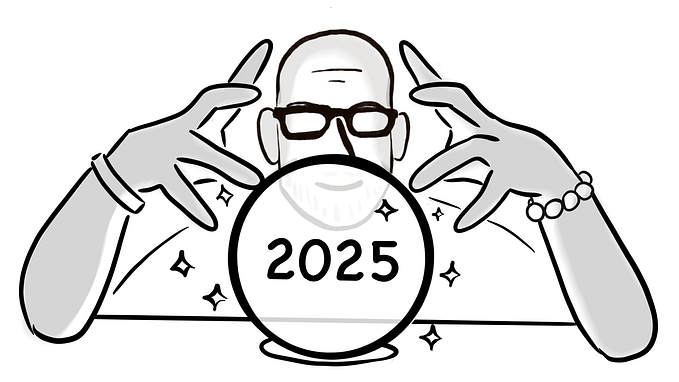The dilemma of outdated standards for investment accessibility in the US and EU
Capital markets regulation in both the US and EU currently manifests an outdated standard that is paternalistic in its overprotection of retail consumers, and over-reliant on the wealth of so-called sophisticated investors as a protective force. On the one hand, technology has greatly reduced the asymmetries that once limited access to information for retail investors. Yet on the other hand, as the 2008 crisis demonstrated, wealth alone does not enable investors to understand the complexity of highly-engineered financial instruments. Following the 2008 financial crisis, the US Congress, acknowledging that the “accredited investor” had fundamentally failed investors, mandated a periodic review of the standard. But the effect of the revised standards has been to further narrow the pool of investors able to participate in the capital markets. This trend towards exclusion creates unequal opportunity and access, which is exactly the problem with the capital markets.

The introduction of blockchain technology into the financial services sector represents a potentially seismic shift in the accessibility of the financial markets. As we consider how to regulate the use of this new technology and look to the existing law for inspiration, it is worth reflecting upon the rationale that serves as the basis for capital markets — and in particular investor protection regulation in the US and EU.
In the US, for example, it is well acknowledged that wealth disparity has dramatically increased since the early 1980s. However, often overlooked is the fact that capital income is shown to be a more significant contributor to total wealth inequality than wage income. This is compounded by the fact that capital income is taxed more favorably than income tax.
Since the 1980s, capital income inequality has nearly doubled in the US. Whereas in 1989, the difference in average capital income between the top 10 percent and the bottom 90 percent was 21:1, by 2013, the ratio had increased to 40:1. It’s no coincidence that this sharp rise in capital income inequality is correlated to the enactment of “Regulation D” in 1982, which governs the exemptions to securities registration.
In the US, the Securities Act of 1933 (the “1933 Act”), which acts as the gatekeeper to the capital markets, has permitted wealthy institutional and individual investors access to vast opportunities, to the exclusion of all others.
The principles that created this two-tier system through “Regulation D” evolved following the aftermath of the Great Depression.
The Evolution of Unequal Access
US securities law as it is known today is the direct consequence of a reactionary response to the stock market crash of 1929, which resulted in the Great Depression. To prevent future crashes, the US Congress enacted the 1933 Act with the goal of protecting investors through a transparent system of thorough disclosure. The Securities Exchange Act later created the Securities and Exchange Commission (SEC) to oversee the implementation of the principles of the 1933 Act. In its original form, the 1933 Act required investors to register all securities offerings, except in the case of offerings to “a few closely related persons” of the issuer.
In the decades that followed, the standard that exempted offerings to “closely related persons” developed into the accredited investor standard as it is known today in Regulation D and the result is a split between those who hold the coveted title of “accredited investor” and those who do not.
Today, the rules for an individual to be granted “accredited investor” status require a minimum net worth of $1,000,000 (excluding the value of primary residence), or an annual income of at least $200,000 for the last two consecutive years (or a combined income $300,000 if married).
The effects of the “accredited investor” exemption are as unsurprising as they are unjust. As a former SEC attorney admitted, “Access to financial markets, like access to education, employment… is significant in promoting opportunity….“By not taking into account differentiation in access, the government perpetuates the ability of certain groups to obtain advantages in the accumulation of wealth not available to other groups, thereby exacerbating disparities in opportunity.”
While the intentions may have been good, the flaw in the evolution of the public offering exemption is that individual investors are deemed capable of protecting themselves solely on the basis of their wealth. What has naturally followed is a two-tier system of opportunity, with negative consequences that have been felt globally.
The Americanization of European Capital Markets
Notably, the European Union (EU) has adopted nearly the same US standard that perpetuates unequal opportunity in the capital markets. In July 2000, the EU tasked the “Council of Wise Men” with the responsibility of streamlining the EU Capital Markets regime. The outcome was a directive that purported to “ensure investor protection and market integrity, in accordance with high regulatory standards adopted in the relevant international fora.”
By following the standards of “relevant international fora,” the EU included exemptions effectively equivalent to those reflective of the “accredited investor” in Regulation D. The exemptions for qualified investors and those able to purchase securities with a minimum ticket size of EUR 100,000 (provided in the Prospectus Directive) incorporate the principles that perpetuate wealth as a standard for financial sophistication.
Interestingly, and perhaps also predictably, European countries have since seen similar consequences with respect to increasing wealth disparity. Research has shown that in Germany, for instance, growing wealth inequality between 2000 and 2006 can be attributed “not only the result of a widening wage distribution but also the result of a widening distribution of capital income.”
A New Opportunity To Reduce Inequality
Before building on these foundations, we have the opportunity to proactively create legislation that takes a 360-degree view of the problem and reflects the kind of inclusive society that we want to live in. One possible solution is to regulate investments based on the liquidity of the investor. For this, investors would only be permitted to invest up to a certain percentage, calculated based on their liquid assets.
Another solution is to create a uniform disclosure regime for all investors with financial and risk information indicated in a manner that is clear, concise and not misleading. In such a regime, exemptions should be provided on the basis of the complexity (e.g more structured opaque offerings require registration) of the securities being issued rather than the wealth of the investor.
There is certainly no clear path for the future, but what is certain is that something must be done to avoid the pitfalls of existing securities regulation, the inequality that is has exacerbated, and the impact this has left on society. Many were surprised by the success of Bitcoin but when we consider just how many people have been excluded from participating in the financial markets and the effects of financial frustration, it may not be so surprising. Investors need protection, but they also need opportunities. The success of the blockchain technology will largely depend on how we strike a balance in regulating these two components.
Join our telegram chat if you have questions or want to meet the Neufund community and team. You can also submit a question here. Or visit our subreddit to join the conversation. Our Freshdesk is a great resource to learn the Neufund basics.









